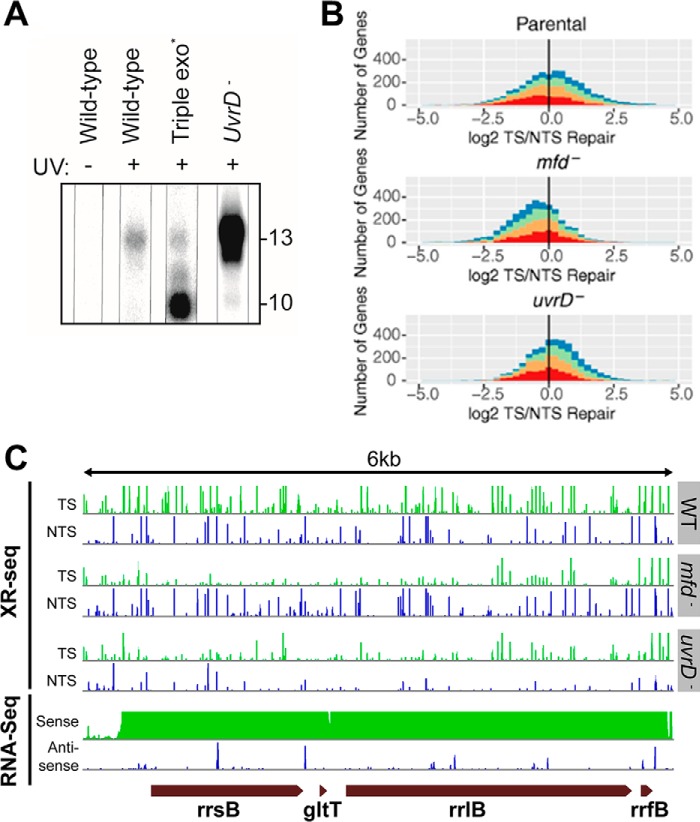Figure 3.
XR-seq analysis of E. coli genome. A, effect of genetic background on recovery of the excised oligomer. In WT cells, 12–13-mers are captured at low yield. In triple exonuclease mutant deficient in major ssDNA exonucleases, the excised oligomer is degraded to a 10-mer by a 3′- to 5′-exonuclease that stops at a nucleotide 3′ to the dimer. Most strikingly, in the uvrD− mutant the excised oligomer is much more abundant than in other strains and almost exclusively 12–13-nt in length, consistent with the idea that the “excised” oligomer is not released from the UvrB-UvrC-DNA complex in the absence of UvrD and hence is protected from ssDNA nucleases. B, frequency distribution of log2-transformed TS/NTS repair in all annotated genes. E. coli genes in three indicated strains are colored by sense strand transcription levels going from the lowest quartile RNA-seq count colored in red, to orange, to green, and to the highest transcription quartile in blue. The log2 (TS/NTS) means for each strain are 1.16 for WT, 0.68 for mfd−, and 1.17 for uvrD− mutant. The vertical black line represents the border where TS repair level is equal to NTS repair. C, screen shots of rRNA operon (including gltT RNA gene) transcription (RNA-seq) and excision repair maps (XR-seq) for E. coli WT, and mfd−, and uvrD− mutants. Note the reversal of the TS/NTS repair ratio in mfd− versus WT and the enhancement of the TS/NTS ratio in uvrD− mutant even though overall repair is reduced in this strain (58).

